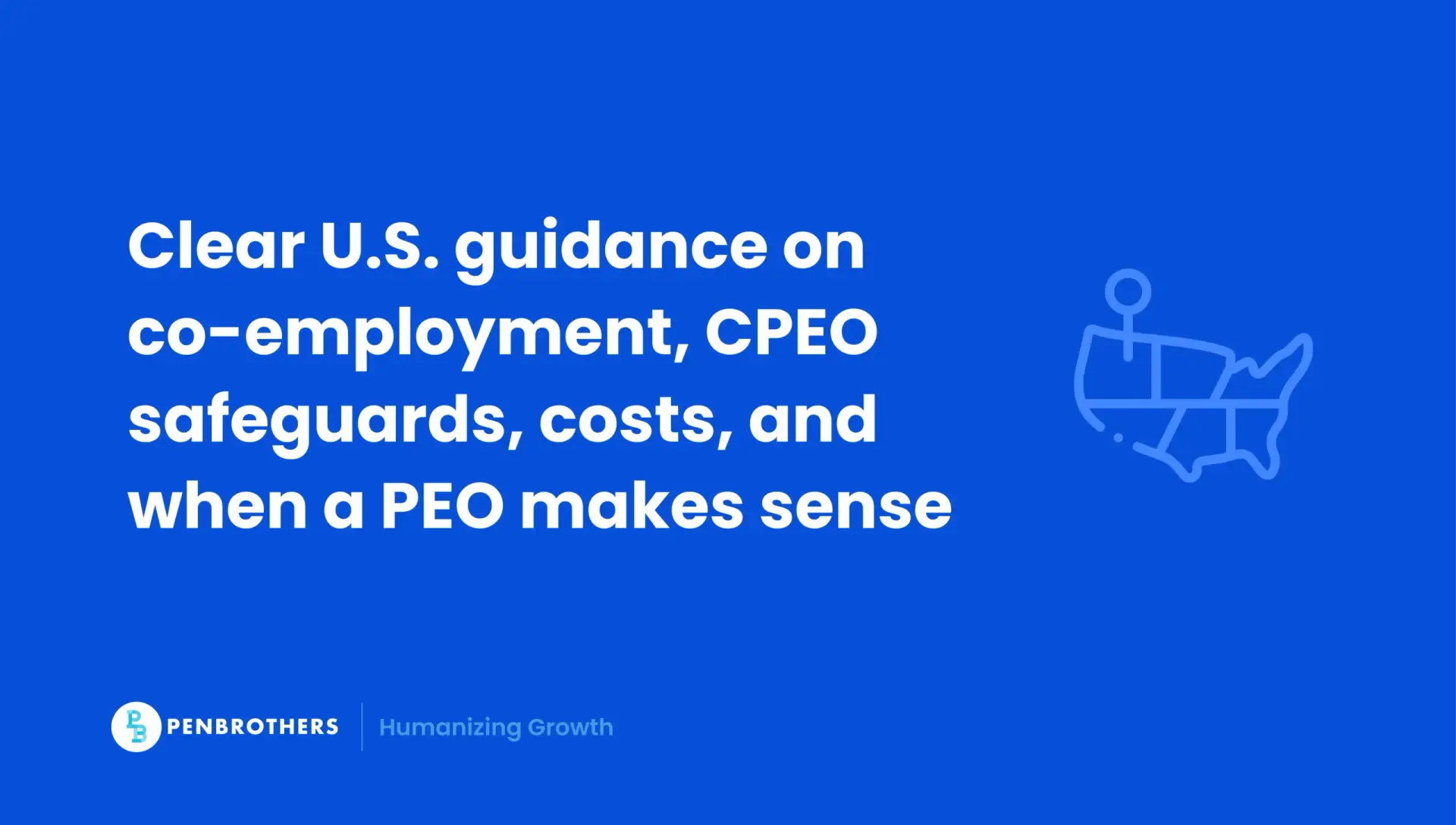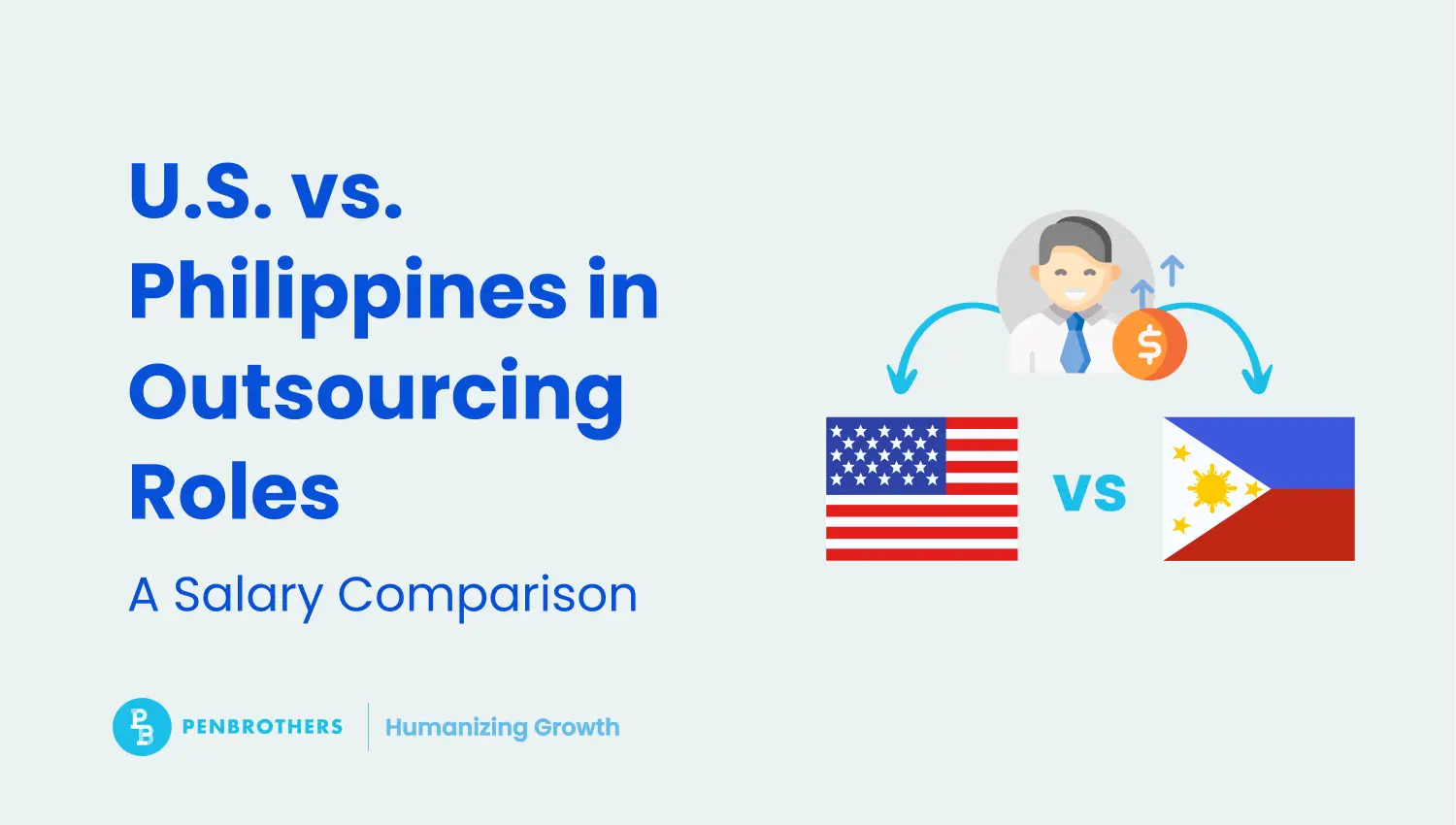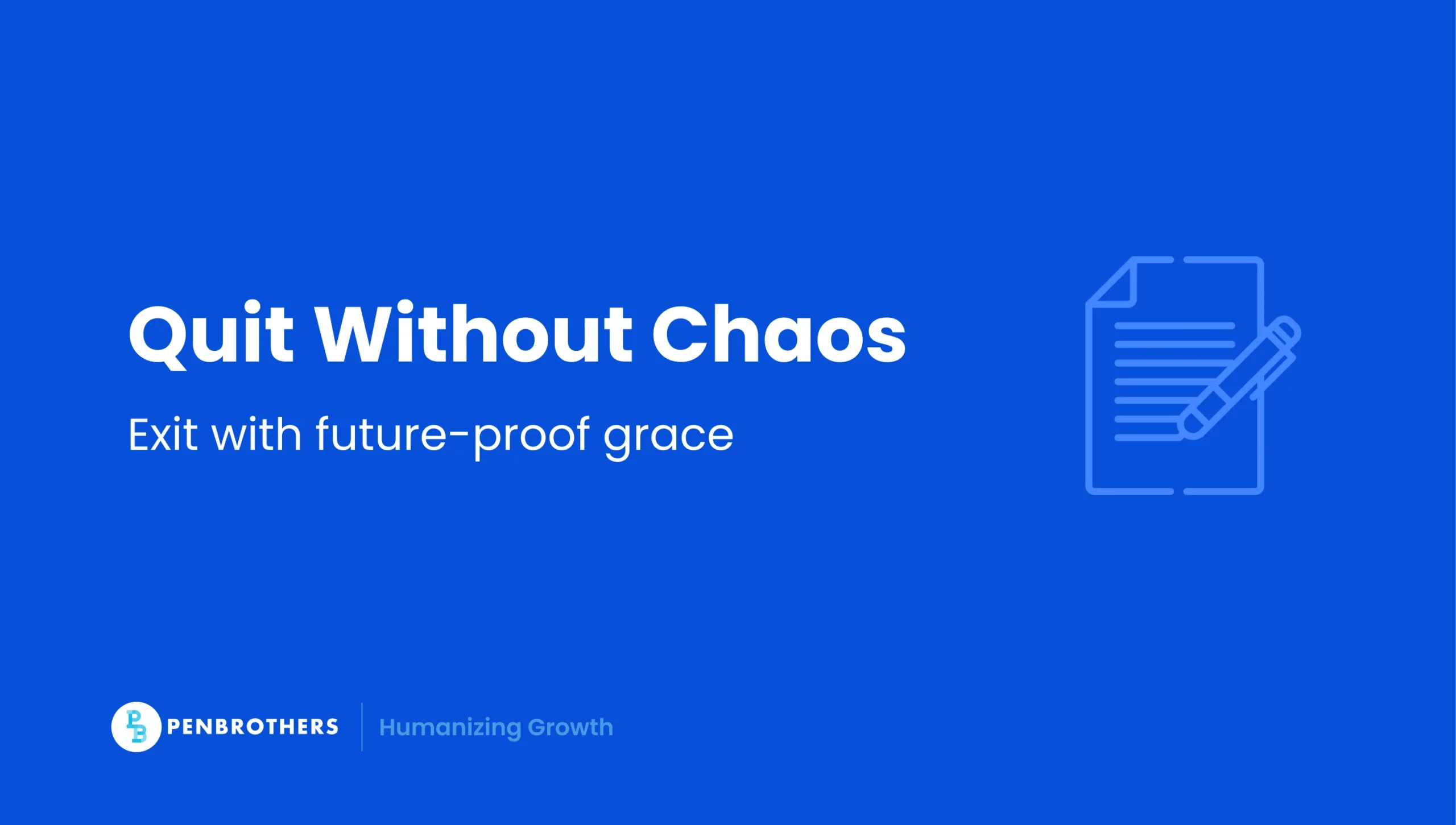What's Inside?
Professional Employer Organization (PEO): A U.S. Executive’s Guide

Your company just hired in three states. Two more on deck. Payroll runs clean, until it doesn’t. Health plan renewals jump thirty percent. Workers’ compensation gets complicated in ways you didn’t anticipate. Then a routine audit request lands in your inbox on a Friday afternoon, and you realize your head of operations has been spending twenty hours a week on HR administration instead of fixing the bottleneck in fulfillment.
Now it’s decision-time. Should you partner with a professional employer organization to transfer risk and reclaim focus, or build more HR capability in-house and hope the complexity doesn’t accelerate faster than your ability to manage it?
This guide provides vendor-neutral answers anchored in primary sources, including the Internal Revenue Service and the U.S. Department of Labor.
Key Takeaways
- A Co-Employment Model for Domestic HR: A Professional Employer Organization (PEO) is a third-party firm that enters a co-employment agreement with a U.S. company. The PEO shares certain employer responsibilities and manages administrative HR functions like payroll, benefits, and compliance, while the client company retains control over daily operations and employee management.
- The Primary Benefits are Pooled Benefits and Compliance: The two main reasons U.S. businesses use a PEO are to gain access to enterprise-level employee benefits (like health insurance) at more competitive rates through the PEO’s pooled plans, and to transfer the risk and administrative burden of navigating complex, multi-state payroll and labor law compliance.
- “Certified” (CPEO) Status is a Critical Distinction: The most important factor in selecting a PEO is its status with the IRS. A Certified PEO (CPEO) is legally authorized to take on the client’s federal payroll tax liability. A non-certified PEO does not offer this protection, meaning if they collect your tax money but fail to remit it, the IRS can still hold your company liable for the full amount.
- PEO is Not the Same as an EOR: These models are frequently confused but solve different problems. A PEO is a co-employer used for your domestic workforce in states where you have a legal entity. An EOR (Employer of Record) is the sole legal employer used to hire staff in states or foreign countries where you do not have a legal entity.
Quick Answers
What Is a Professional Employer Organization?
A professional employer organization (PEO) is a third party that enters a co-employment agreement with your business to deliver HR, payroll, benefits administration, and compliance support. In co-employment, the PEO shares certain employer responsibilities while you keep day-to-day control of work and management. Your employees remain your employees. They just show up on the PEO’s payroll, too. Industry and regulatory materials call them worksite employees.
A PEO is not a temp agency. Not a staffing firm. Not an international employer of record. A PEO does not supply short-term labor, and it does not become the legal employer for immigration or cross-border hiring. It handles the administrative machinery of employment for people you’ve already hired and manage.
Why Use a Professional Employer Organization
Executives choose PEOs for four outcomes that matter:
- Compliance support, including payroll tax handling, benefits plan governance, and required filings across jurisdictions you may not fully understand yet.
- Benefits buying power, often via pooled plans that expand access and improve pricing tiers in ways a fifty-person company cannot negotiate alone.
- Time savings across payroll, onboarding, handbook alignment, and the endless routine of HR administration that consumes leadership bandwidth.
- Operational focus, allowing you to redeploy attention to growth, product, and customers instead of decoding multi-state leave policies at nine PM.
Industry research consistently reports improved business performance for PEO clients. Faster growth. Lower turnover. Higher survival rates. See the NAPEO research links in this guide for sourcing. The data is credible.
How a Professional Employer Organization Works, Step by Step
The Client Service Agreement
The relationship is defined by a client service agreement that divides responsibilities across payroll, taxes, benefits, HR policy, safety, and dispute handling. You direct day-to-day work. You set compensation. You manage performance. You decide who stays and who goes. The PEO administers agreed HR processes, maintains required records, and supports compliance in ways that would otherwise require you to hire specialized staff or expensive consultants.
Payroll, Taxes, and Filings
Under co-employment, the PEO generally processes payroll, withholds and remits employment taxes, and manages quarterly and annual filings. State unemployment tax (SUTA) and federal unemployment tax (FUTA) handling is specified in the agreement. For certified PEOs, this has defined federal consequences under IRS rules that transfer liability in ways non-certified PEOs cannot guarantee.
Learn how the IRS defines and oversees Certified PEOs (CPEOs), including tax liability rules and quarterly public listings. The CPEO public list updates every quarter. For verification, you can view the current PDF list of CPEOs and the IRS explainer on what you need to know about CPEOs and liability effects. This matters more than most vendor sales decks will tell you.
Benefits and MEWA Realities
Many PEOs provide access to pooled health and welfare plans. Pooled arrangements can qualify as Multiple Employer Welfare Arrangements (MEWAs), which face specific federal and state oversight. The history of MEWAs includes spectacular failures and unpaid claims. Executives should confirm plan governance, filing discipline, and disclosures before enrollment, not after your employees start asking why their medical claims aren’t being paid.
Read the U.S. Department of Labor’s MEWA guide under ERISA for federal and state oversight details, and the full PDF booklet that explains what can go wrong. For filing obligations, see the DOL’s Form M-1 portal. These are must-reads if you’re signing a multi-year agreement.
Workers’ Compensation and EPLI
PEOs help place workers’ compensation coverage and often bundle employment practices liability insurance (EPLI). Premiums and deductibles depend on class codes, experience modifiers, payroll exposure, and safety programs. The math gets complicated. Ensure the agreement clarifies ownership of loss history data and access to reports. When you leave a PEO, you need that claims history to avoid starting from zero with the next carrier and watching your premiums spike.
ACA, Leave, and HR Compliance Support
PEOs typically support ACA eligibility tracking and reporting, leave compliance, policy updates, and multi-state employment complexity. Expect help with notices, recordkeeping, and required postings, with responsibilities documented in the agreement. The value proposition here is straightforward. They know the rules. You probably don’t. They stay current. You probably won’t without hiring someone whose full-time job is reading Federal Register updates.
Costs and Pricing Models
Pricing Structures
Professional Employer Organization pricing most commonly follows two models:
- Percentage of payroll, where the admin fee scales with gross payroll. Usually two to twelve percent.
- Per-employee per-month (PEPM), where the admin fee is a flat amount per covered headcount. Typically $150 to $300 per employee.
The admin fee covers payroll processing, tax filings, HRIS access, standard HR support, and compliance guidance. Health premiums, workers’ compensation, and certain insurance lines are usually pass-through costs billed separately. You pay what the PEO pays. The question is whether they negotiated better rates than you could have on your own.
What Drives the Quote
Quotes reflect industry risk class, headcount, multistate footprint, benefits design, loss history, and safety maturity. Highly distributed teams, high-risk roles, or complex benefits selections move pricing bands. A software company with remote workers in low-risk roles pays less than a regional HVAC contractor with technicians climbing on commercial roofs in July.
Avoiding Apples-to-Oranges Comparisons
Normalize pass-throughs when comparing proposals. Align on health premiums, workers’ compensation terms, payroll tax flows, and paid add-ons. One PEO might quote a low admin fee but attach expensive insurance. Another might quote higher but deliver better pooled rates that lower your all-in cost by fifteen percent. For high-salary teams, a PEPM model provides cost clarity that percentage models cannot. When your senior engineers get raises, your PEO bill shouldn’t automatically increase if the administrative workload hasn’t changed.
Risks, Limitations, and When Not To Use a Professional Employer Organization
MEWA Exposure and Plan Governance
Poorly governed pooled plans create avoidable risk. Confirm ERISA status, state registrations, filings, and stop-loss arrangements. Request plan documents, summary plan descriptions, and recent filings. If the PEO hesitates or provides incomplete answers, that hesitation is your answer. Walk. Primary references are the DOL’s MEWA guide and Form M-1 portal cited above.
Non-CPEO Payroll Tax Risk
With certified PEOs, federal employment tax treatment is defined by statute and IRS procedures. The IRS transfers liability to the CPEO. Non-certified PEOs do not confer the same federal tax liability treatment. If a non-certified PEO collects your payroll tax funds and fails to remit them, the IRS can hold you liable for the full amount plus penalties and interest. This is not theoretical. It happens. Always verify certification on the IRS public list before signing. Takes five minutes.
Fit Mismatch
PEOs are not universal solutions. Very small teams may not absorb PEPM fees without erasing the value proposition. Volatile headcount, union environments, or highly specialized benefits needs can reduce fit. Companies with strong internal HR operations may prefer a lighter HRO or ASO approach that preserves more control and customization. If you already have an experienced VP of People and sophisticated HRIS infrastructure, a PEO might feel like paying for capabilities you’ve already built.
Transition and Offboarding Risk
Most friction appears at transitions. Control it with parallel payroll runs, reconciled census data, clear cutoff dates, and a documented offboarding plan that covers final filings, data export, and benefits termination. The PEO owns your payroll history and loss runs during the relationship. Ensure the contract guarantees clean data export in usable formats when you leave. Otherwise, you’re negotiating data portability after you’ve already decided to leave, and your leverage is gone.
PEO vs EOR vs ASO vs HRO, One-Screen Matrix
Legal Employer, Contracts, Use Cases, and Cost Tendencies
PEO. Co-employment inside one country. Your company remains the common law employer. Best for U.S. small and mid-sized businesses that want pooled benefits and day-to-day control with compliance support. You must have a legal entity where your employees work.
EOR. Third party becomes the legal employer for your workers in a given jurisdiction. Often used for international hiring or rapid multi-state expansion, where entity or registration is not yet in place. The U.S. Chamber explains the difference between PEO and EOR models clearly. You don’t need a legal entity. The EOR is the legal employer. You direct the work but don’t sign the paychecks.
ASO/HRO. Administrative or outsourced HR support without co-employment. Your company remains the employer of record for all purposes. You file taxes under your EIN. You sponsor your own benefit plans. The ASO just processes the paperwork. See the U.S. Chamber’s comparison of PEO and HRO models for more detail.
The choice depends on where you are and where you’re going. Established domestic company with growth plans? PEO. Hiring in a state where you have no entity? EOR. Want payroll help but nothing else? ASO. It’s not complicated once you understand the distinctions.
Executive Due-Diligence Checklist
Use this checklist before you sign. These are the questions that matter, not the questions in the sales deck.
- Verify CPEO status on the IRS public list and document the effective date. If they claim certification but don’t appear on the list, the conversation is over.
- Request audited financials and bonding evidence from the PEO. CPEOs must meet IRS bonding requirements. If they won’t provide financials, they’re either hiding something or too small to have proper controls.
- Confirm SUTA and FUTA handling in the agreement, including rate ownership and experience transfer rules. How does your unemployment tax rate get calculated when you’re pooled with their other clients? What happens to your rate history if you leave?
- Review plan governance for health and welfare benefits, including MEWA registrations and Form M-1 filings when applicable. Is the plan fully insured by a major carrier, or self-funded? If self-funded, what are the stop-loss limits and reserve requirements?
- Check workers’ compensation carriers, class codes, deductibles, and ownership of loss runs. You need those loss runs when you leave. Make sure the contract says you get them.
- Validate ACA capabilities, including measurement, affordability tracking, and reporting. Have they filed 1094-C and 1095-C forms for all their clients on time? Ask for evidence.
- Assess data security and access rights for HRIS, payroll, and document repositories. What certifications do they hold? SOC 2 Type II? Who has access to your employee data? Where is it stored?
- Define SLAs and QBR cadence for support, ticket response, and change management. What’s the guaranteed response time for a payroll error? For a benefits enrollment issue? Get specific commitments in writing.
- Clarify termination terms, data export formats, and assistance during offboarding. How much notice is required? What are the penalties? What format do you get your data in, and how long does the transfer take?
Final Executive Takeaways
A professional employer organization can streamline HR operations, reduce administrative risk, and expand benefits access inside the United States. Results and value depend on governance quality, contract clarity, and your internal readiness. This is not a decision you make in a single sales call.
Certification matters. CPEO status changes federal employment tax treatment. Verify in minutes on the IRS public list. Non-certified PEOs leave you exposed to payroll tax liability even after you’ve paid them to handle it.
Pooled benefits require diligence. MEWA oversight brings federal and state obligations. Confirm filings and plan controls before you enroll your employees in a health plan that might not be there when they need it.
Right model, right time. Choose PEO for domestic co-employment and pooled scale. Choose EOR for jurisdictions where you lack an entity or need immediate coverage. Consider ASO or HRO if you want support without co-employment and you’re large enough to negotiate your own benefits competitively.
The decision to partner with a PEO is a strategic transfer of risk, not just an administrative outsourcing arrangement. Evaluate it accordingly. The most critical questions are not about payroll efficiency. They’re about mitigation of potentially catastrophic financial and legal liabilities that could end your business if mishandled. Choosing an IRS-certified CPEO transfers the risk of federal payroll tax non-payment. Thoroughly vetting a PEO’s health plan structure mitigates the significant risks associated with MEWAs.
A secondary consideration: potential for cultural homogenization. By implementing standardized HR policies, employee handbooks, and benefits packages, a PEO can inadvertently dilute the unique attributes that define your company. Avoid this by customizing the PEO’s offerings to reflect your values and operational style. The loss of control should remain purely administrative, not cultural.
A note on what we do: Penbrothers is not a PEO. We specialize in HR outsourcing, helping companies build offshore teams in the Philippines with the kind of support structure that makes remote talent actually work. If you’re evaluating a PEO, or trying to decide between a PEO and building offshore capacity, or just trying to figure out which model fits your growth plan, we can help you think it through. No sales pitch. Just clarity on what makes sense for your business.
Frequently Asked Questions
A PEO is a company that provides comprehensive HR services, including payroll, benefits, and compliance, by entering into a “co-employment” relationship with your business. This means the PEO legally shares certain employer responsibilities for your employees, even though you still manage all of their day-to-day work.
A PEO (Professional Employer Organization) is a co-employer that is used for your domestic (U.S.) workforce, and your company must have a legal entity in that state. An EOR (Employer of Record) is the sole legal employer for your staff, typically used for hiring in states or foreign countries where your company does not have a registered entity.
The two main reasons are benefits and compliance. A PEO pools all of its clients’ employees together, which allows a small business to offer Fortune 500-level health insurance and other benefits at a much lower cost. It also manages the complex, time-consuming, and high-risk work of multi-state payroll, tax filing, and labor law compliance.
A CPEO is a PEO that has met the strict financial and operational standards of the IRS. This certification is critical because a CPEO is legally authorized to take on the liability for federal payroll taxes for its clients. If you use a non-certified PEO and they fail to pay your taxes, the IRS can still come after your business for the full amount.
The primary risks involve using a PEO that is not properly vetted. If you use a non-certified PEO, you retain the risk for federal payroll tax failures. If the PEO’s health plan is a MEWA (Multiple Employer Welfare Arrangement) that is poorly managed, your employees’ claims could go unpaid. Finally, some companies find the co-employment model to be constraining and prefer more control over their HR policies.




